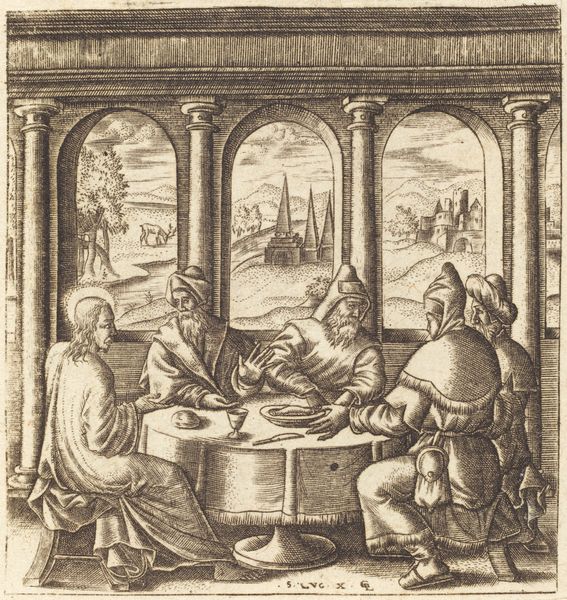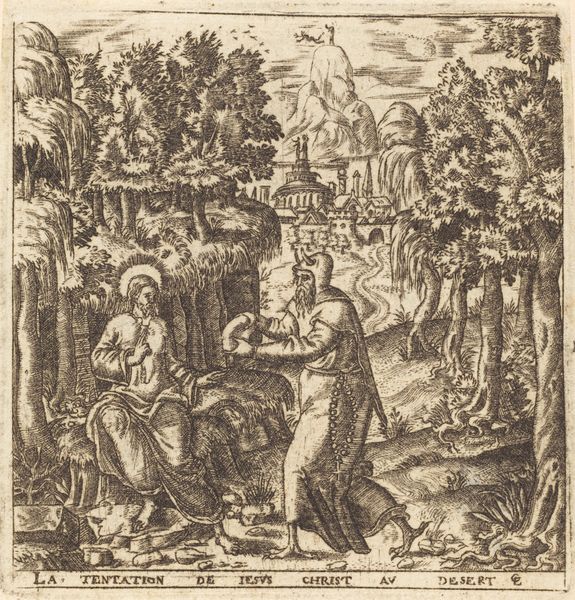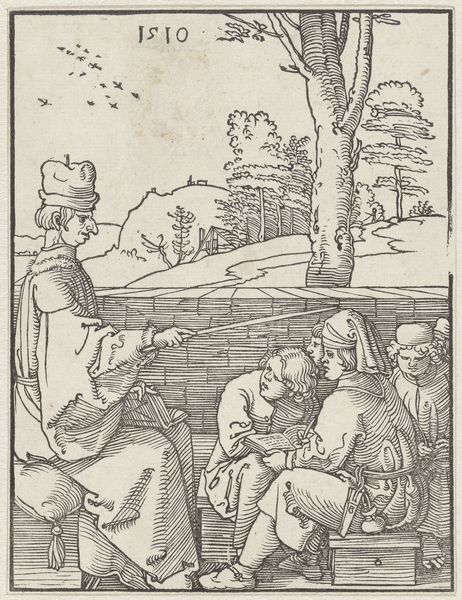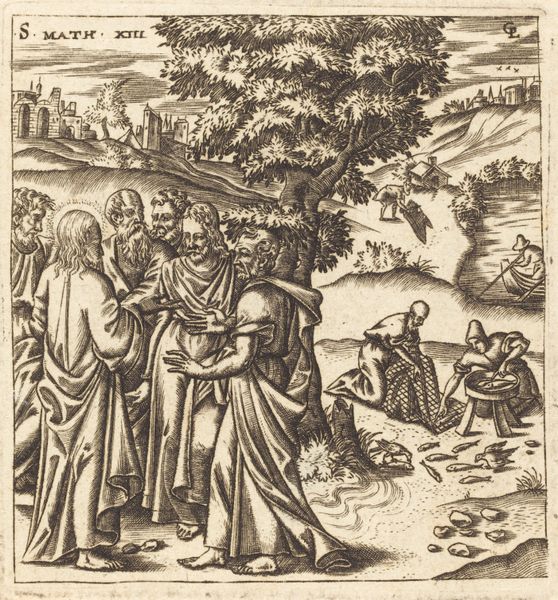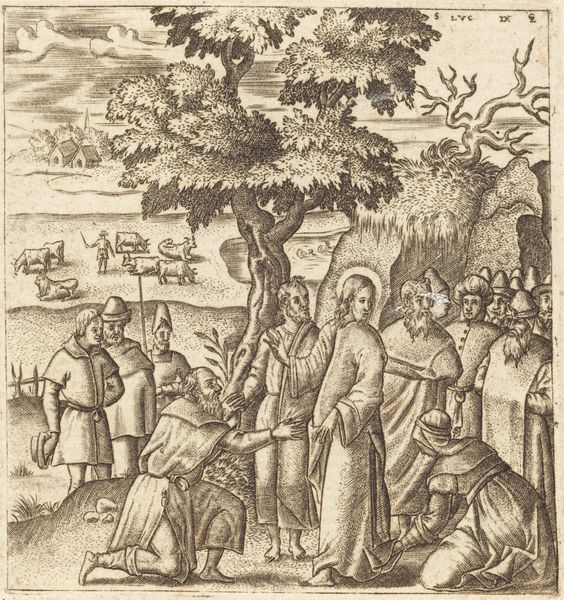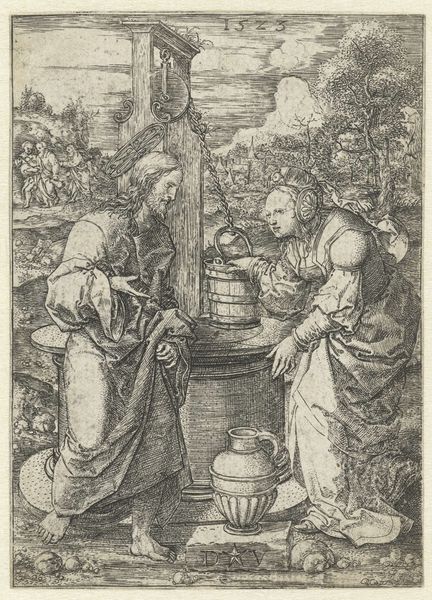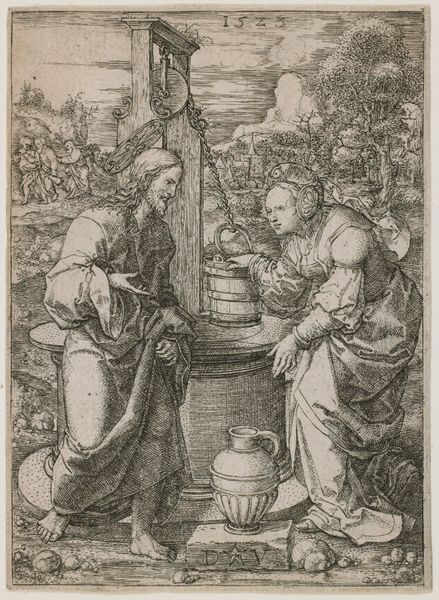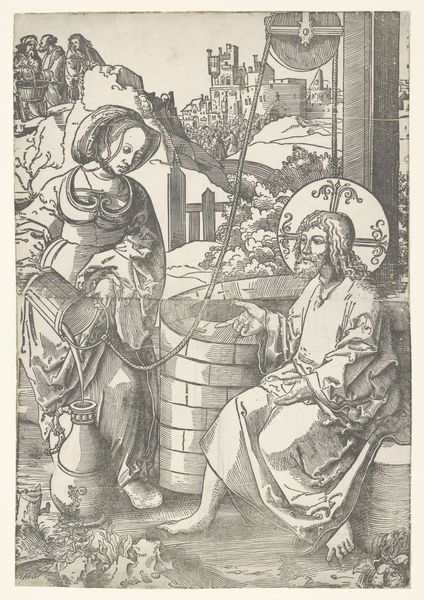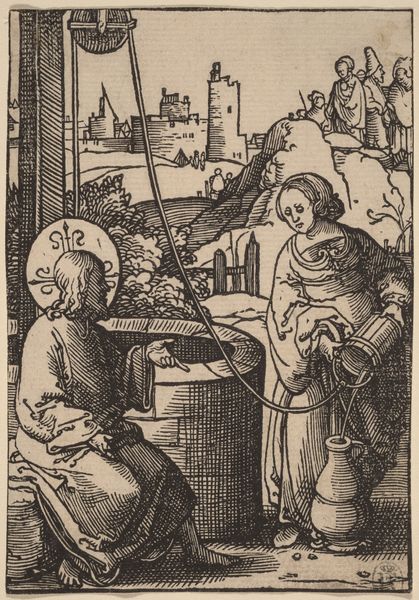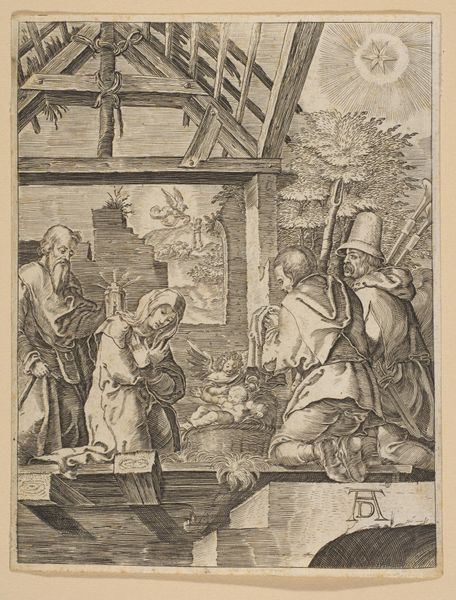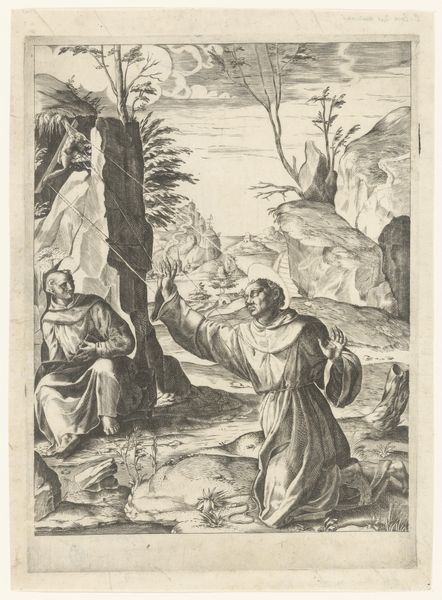
print, engraving
# print
#
history-painting
#
northern-renaissance
#
engraving
Copyright: National Gallery of Art: CC0 1.0
Curator: This engraving, dating from around 1576-1580, is attributed to Léonard Gaultier and titled *Christ and the Woman of Samaria*. Editor: My initial response is that it's deceptively tranquil, almost a mundane genre scene—until you register the halo. There's something subtly powerful about situating a pivotal religious encounter within such a meticulously detailed, everyday setting. Curator: Absolutely. Gaultier, working in the Northern Renaissance style, masterfully uses detail to convey narrative and symbolism. Notice how the well, central to the composition, functions both as a literal water source and a symbolic meeting place. Editor: And the very act of drawing water! In many cultures, that's typically a women's collective activity, yet here, it becomes a point of engagement, an instance of a woman in conversation with power in the form of Jesus. The other men are observing the conversation, adding to its tension and unusual dynamic. The depiction subtly critiques societal boundaries. Curator: Precisely. The image speaks to cultural memory by evoking a core biblical narrative, that transcends the limitations and cultural stereotypes that are placed upon both groups by wider society. The well acts as a psychological space where the unspoken differences surface. Editor: The woman of Samaria, often marginalized within her own community and the larger Jewish society, finds herself in direct conversation with Jesus, disrupting established social hierarchies. Water symbolizes purification, both literal and metaphorical, the offer that he gives becomes especially subversive, don't you think? Curator: Undoubtedly. Her action itself holds inherent symbolic power as well as transformative potential, her drawing and subsequently receiving water directly challenged both existing social prejudices and power relations present between both figures. Editor: For me, seeing this work underscores the enduring power of visual narratives to challenge prevailing ideologies and depict moments of profound societal reckoning, with the landscape offering an unusual everyday surrounding. It shows just how a simple everyday action, such as getting water from a well, can have long term implications on social and cultural reformation and wider perceptions. Curator: Indeed. Gaultier’s work encourages us to reconsider familiar stories, recognizing their continued resonance through time by highlighting that it’s often within the mundane where change can happen, as seen in symbolic forms.
Comments
No comments
Be the first to comment and join the conversation on the ultimate creative platform.
